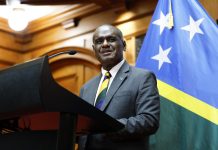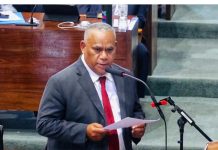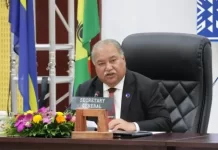Government negotiators have asked the co-chairs of the talks on a new climate finance goal to streamline the text by Thursday morning, removing repetitions and redundancies – but not adding anything new or taking away anything substantial.
These instructions come one day after negotiators asked the co-chairs to make the nine-page text they had prepared before COP29 longer, by adding back in all the options, leading to a 34-page text released on Wednesday.
Alejandra Lopez, head of climate diplomacy at Colombian NGO Transforma, said streamlining the document was a good idea, because the text was now “really long” with “lots of repetitions, lots of duplications”. She said the “options weren’t clear”, and it didn’t offer “a workable text to negotiate”.
Natural Resources Defence Council finance expert Joe Thwaites said this kind of lengthening and chopping is common in the UN climate process, as countries want the comfort of knowing their ideas have been included in the text but then need to start whittling it down so they can move forward.
But he warned, “it’s Wednesday already – we have three more days until ministers arrive next week”. The delay on the first day in adopting the agenda for COP29 has put negotiations behind schedule, he said, “so I think that’s why everyone is a bit anxious and stressed”.
The new finance text is likely to have the same options for the structure of the goal as the previous two. The first option is a goal for a certain dollar amount, consisting of finance provided by governments and private finance mobilised by their money.
The second is a provision and mobilisation goal, plus a wider investment goal that includes private and domestic finance. As this goal is “multi-layered”, it has been compared to an onion – and it’s what developed countries want.
The latest text has several different proposals for the size of the government finance goal: US$100bn+, US$1tn+,US$1.1tn, US$1.3tn+ or US $2tn. Developed countries want less and developing countries want more, with the G77 and China umbrella group jointly pushing for US$1.3tn+.
On who pays, both texts include the same options – either just developed countries or various criteria to identify a larger set of contributors based on countries’ wealth and emissions.
Wednesday’s morning text had new specific proposals for minimum amounts that should go to Least Developed Countries (LDCs) and Small Island Developing States (SIDS). The latest text has options for US$220bn for LDCs and $39bn for SIDS in grant-equivalent terms each year.
It also introduces options specifying that countries should stop using climate finance to support fossil fuels or “emissions intensive investments”. That might seem obvious but it’s not, for example, to the Asian Infrastructure Investment Bank – which last year counted its investment in a gas-fired power plant in Bangladesh as climate finance.
Both the pre-COP and the Wednesday morning texts have – outside brackets, suggesting it’s uncontroversial – commitments to phasing out “inefficient fossil fuel subsidies that do not address energy poverty or just transitions”. But the Wednesday morning text adds a target date of 2025 alongside the previous text’s options of 2035 and “as soon as possible”.
Multilateral development banks (MDBs) say they are “walking the talk” on climate finance as pressure piles on them to channel more of their cash into developing countries’ efforts to shift to clean energy and adapt to climate change.
Their overall climate finance provision is estimated to reach US$170 billion a year by 2030 – up 30% from a “record high” of US$125 billion in 2023, the group of ten MDBs, including the World Bank, said in a joint statement on Tuesday.
Drilling down into the numbers, over 70 percent of the money (US$120 billion) is expected to go to low and middle-income countries, with more than a third of that earmarked for adaptation.
Rob Moore, associate director for public banks and development at think-tank E3G, told journalists on Wednesday that this number is “significant” as it “provides a basis” for the New Collective Quantified Goal (NCQG) to go significantly beyond the existing figure of US$100 billion a year.














